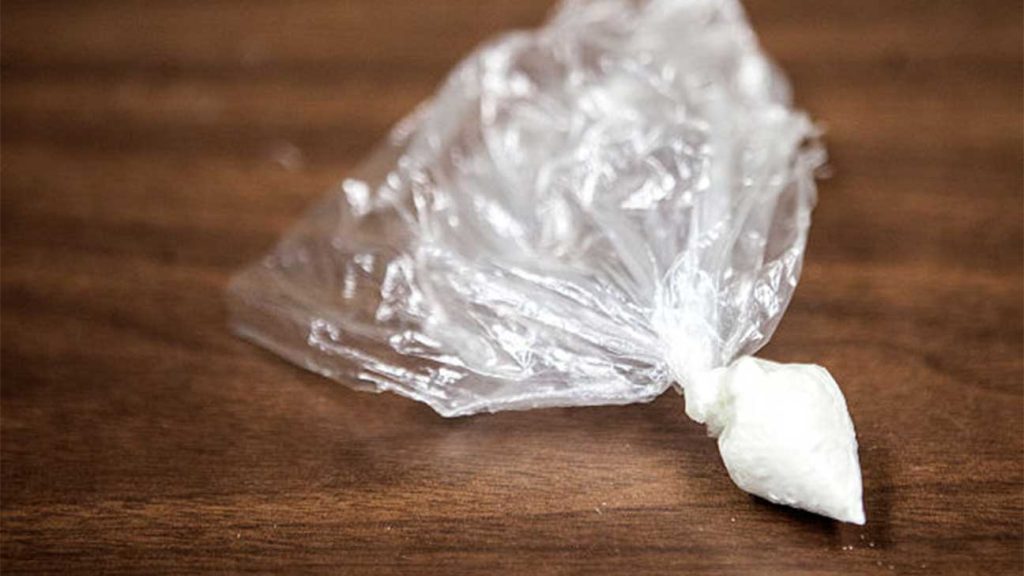8 ball of Coke
What is 8 Ball of Coke?
The phrase « 8 ball of coke » refers to a small amount, around 3.5 grams, of cocaine powder. It looks like a pool ball. Dealers pack this specific quantity in tiny plastic bags. For cocaine users, an « 8 ball » means a personal dose, not for selling. It’s meant for one person to use.
But despite its simple name, cocaine is a powerful addictive drug. It ruins lives and hurts communities badly. Learning about the « 8 ball » shows how dangerous cocaine addiction truly is. People need help to recover from it.
The compact "8 ball of cocaine" appeals to cocaine users because it's easy to transport and hide when consumed. However, the risks involved cannot be ignored.
When learning about cocaine and the « 8 ball, » make informed choices and understand the dangers fully. Knowing just the definition is only the first small step. Dig deeper to grasp all the complexities and far-reaching harm this drug causes.
When learning about cocaine and "8 ball", make informed choices and fully understand the dangers. Knowing the definition is only the first step. Deepen your knowledge to grasp the full complexity of this drug and the considerable damage it causes.
What does an 8-ball Coke look like?

An 8 ball of coke looks distinct from other drugs. Inside the small plastic bag is a fine white powdery substance, similar to baking soda or powdered sugar. About 3.5 grams can fit easily in the palm of your hand.
Though round or oval to conceal, baggies’ size and shape differ. Dealers’ packaging varies, yet these traits characterize an 8 ball quantity.
Understand, cocaine use and possession are illegal in most countries, including the United States. Recognizing an 8 ball’s distinct appearance can help avoid this dangerous substance.
What are the side effects of an 8 Ball of Coke?
Using an 8 ball of coke can profoundly impact body and mind, short and long-term. Understanding the potential effects is crucial for users of the addictive substance.
Short-term side effects.
- Euphoria, renewed energy: intense pleasure and energetic sensations are common during consumption. Consumers can feel confident and talkative, with a heightened sense of well-being.
- Dilated pupils, heightened alertness: cocaine stimulates the central nervous system, dilating pupils and heightening alertness. The senses can become sharper, and the need for sleep diminishes.
- Restlessness, irritability: as the initial effects wear off, users may feel restless, anxious and irritable. Concentration may suffer, and mood may deteriorate.
- Increased heart rate and blood pressure: one of the most dangerous short-term effects of cocaine. Increased heart rate and blood pressure can lead to palpitations, chest pain, and even heart attack or stroke in the most serious cases.
Long-term side effects.
- Heart and vascular problems: Frequent cocaine use can damage the cardiovascular system. This increases the risk of heart attacks, irregular heartbeats and heart disease.
- Respiratory problems: Snorting cocaine damages the respiratory system. It causes chronic coughing, shortness of breath, lung infections and pneumonia.
- Cocaine can make you paranoid, anxious and depressed, and cause you to lose touch with reality over time. These mental health problems disrupt daily life.
- Addiction and the difficulties of quitting: Cocaine is extremely addictive. Using an 8-ball quickly leads to dependence. Withdrawal leads to fatigue, sadness and intense cravings, making it very difficult to stop.
Understand the serious dangers of using a ball of cocaine 8. Get professional help for your addiction. Contact treatment centers or support groups for recovery. Help is available to overcome addiction.
What is the price of an 8-ball of cocaine?
The selling price of an 8 ball of coke depends on location, availability and demand. Generally speaking, it's between $150 and $300.
Though, it’s crucial to understand that the cost might significantly differ across regions. In major metro areas or places with high narcotics trafficking, prices could skyrocket. Alternatively, areas facing lower demand or limited supply could see reduced rates.
The cocaine street value fluctuates. Purity levels and supplier reputation impact pricing. Greater purity often drives up costs, as users associate purer cocaine with stronger effects. Moreover, a supplier’s standing, clientele, and risks undertaken influence pricing decisions.
Crucially, we must recognize purchasing or using illegal substances poses grave dangers and breaches the law. While an ‘8 ball’ of cocaine may entice, the risks and repercussions far outweigh any perceived benefits.
If you or someone close battles cocaine addiction, seeking professional help is vital. Treatment facilities, support groups, and therapy options offer paths forward. Remember, recovery and a drug-free existence are indeed achievable.
Please note: the sale price mentioned is for educational purposes only and does not encourage illegal acts. Stay informed and make responsible choices.
Where does cocaine come from?

Cocaine, an addictive stimulant, derives from leaves of the coca plant (Erythroxylum coca). Native to South America, this plant predominantly grows in Colombia, Bolivia, and Peru – regions offering favorable climates and elevations for coca cultivation.
To begin, coca leaves get harvested and dried, before being processed. Next, chemical extractions are done to isolate the active ingredient – the cocaine alkaloid. This extracted alkaloid goes through further refinement and processing into various forms like powder cocaine and crack cocaine.
For many years, Colombia was the top dog in cocaine production. It handled a huge chunk of the worldwide illicit drug trade. Colombia had perfect conditions for growing coca – the raw material. There were large areas of remote, hard-to-reach terrain.
But Colombia wasn’t alone in the cocaine game. Bolivia and Peru were major players too. They contributed greatly to cocaine’s production and global distribution. Combating drug trafficking proved challenging because of rugged geography and limited resources.
In addition, the illegal cocaine trade fuels widespread violence, corruption and environmental destruction in these regions. National and international law enforcement agencies have worked tirelessly to reduce drug production and trafficking. But their efforts continue.
Understanding the origins of cocaine helps us to better understand the global dynamics of this illicit substance. Tackling the root causes will help mitigate the adverse effects on communities around the world.
How can you get help for cocaine addiction if you need it?
Recognizing addiction signs is step one towards getting help. If you or someone close battles cocaine addiction, know that treatment options exist to aid recovery. Here are steps to take for accessing needed support: .
- Recognize the signs.
A cocaine user’s health can really suffer. Key signs are: needing more cocaine to feel its effects, withdrawal struggles when stopping, failing to quit, neglecting duties, and wrecked relationships. Spotting these tells is crucial to getting proper aid.
- Consult a healthcare professional.
See a doctor or addiction expert first. They’ll assess you fully and advise the ideal treatment tailored to you. Physical checks and medical history checks will guide the way forward.
- Explore treatment options.
Treatment choices for cocaine addiction are inpatient care (most intensive, 24/7 medical backup, intense therapy), outpatient programs (balanced treatment alongside normal life), and residential treatment programs.
- Therapy and support groups.
Therapy is vital. Individual sessions probe addiction roots and teach coping skills. Group therapy offers a supportive space to share experiences and learn from others battling addiction. Narcotics Anonymous and similar groups also provide ongoing guidance and encouragement.
- Create a solid support system.
Getting supportive people around you boosts recovery success hugely. You’ll need friends and family who show patience and back your sober efforts. Also, joining support groups connects you with people walking the same path. Their guidance and stories prove super helpful.
on’t give up – staying away from cocaine takes ongoing work but absolutely can be done. The right treatment, plus the right support network on your side, empowers you to beat addiction’s grip and live freely again. Resources exist to guide you when struggles arise, so reach out.
FAQ
An "8 ball of coke" is a slang term commonly used to designate an eighth of an ounce (about 3.5 grams) of cocaine.
The term « 8 ball » originates from pool (billiards) where the black ball, also known as the 8 ball, is a prominent feature. The term was adopted into drug culture to denote an eighth of an ounce of cocaine, primarily due to its resemblance in size to a typical pool ball.
Prices can vary considerably depending on factors such as location, purity and availability. However, an "8 ball of coke" can range from $150 to $250, or even more, in some regions.


